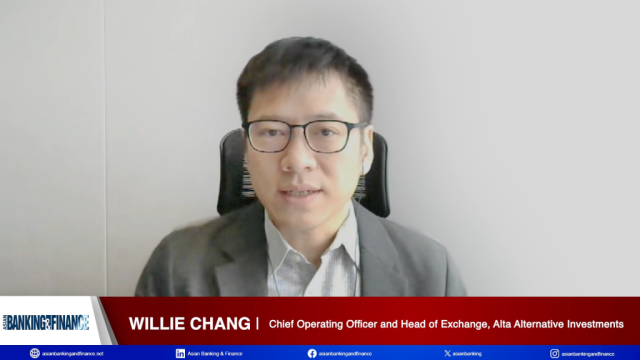Four Crucial Defense Strategies against revenue erosion for Private Banks in Asia
By Silvio Struebi and De LiuIt is no secret that the private banking industry in Asia is facing revenue pressure on multiple fronts, with margin compression and revenue erosion becoming the new normal. There are a few key developments driving this pressure, including:
- An evolving consumer base: Capital is being transferred from Generation X (baby boomers) to Generation Y (millennials). Although the millennials are more receptive to innovative investment options – presenting a gap in the market – many private banks (PBs) continue to adhere to traditional business conventions and are failing to capitalise on this lucrative revenue stream.
- Low-cost wealth management alternatives from fintechs: The emergence of new services such as online trading platforms and robo-advisors are attracting millennials, who typically prefer digital solutions. Before committing to a service, they tend to do their research in order to ensure they make an informed decision.
- Future customer protection regulations: MiFID II regulations kicked in earlier this year in Europe, and although similar regulations are imminent in Hong Kong and Singapore, most banks are far from prepared for the consequences.
As a result, leading private banks in Asia are seeking innovative solutions that will safeguard the future of their business. Here are crucial defense strategies that Asian private banks should look into:
Increasing customer value through service differentiation and low-cost digital alternatives
Many banks try to offer a comprehensive suite of services to cover every client type. However, the future may see a move towards more specialist services, with banks leveraging strengths and focusing on USPs for specific high-value segments, such as offering expert advice for certain asset classes, club deals, etc. This shift will lead to significantly higher margins while parts of the core business will be further commoditised by Fintechs.
Many private banks are looking to tap again into more retail or HWNI segments to drive growth. This requires a new client servicing approach and more low-cost solutions, such as online trading platforms. The winning strategy is to differentiate services to bring down costs, implement effective pricing across channels and client segments, and ensure smart integration of online private banking solutions to protect current margins.
Improving the customer journey and enhancing client experience
Private banks are seeking to improve the customer journey by providing analytic capabilities at every client touchpoint. The insights generated will enable them to remove sales barriers and adopt measures that steer purchasing behaviour. For this to happen, there is a need for a greater understanding of price psychology, and better client communication. Banks can start by investing in sales tools that support Relationship Managers (RMs) in sales planning, making product recommendations, setting target revenues and revenue margins per client, as well as flagging clients that are not on target, followed by suggesting corrective measures.
Formalising advisory relationships with modular services
At present, most customers with self-directed investment (SDI) accounts are only charged for trade transactions, with investment advice provided free of charge. Although leading private banks have attempted to monetise advice, their efforts to replicate EMEA advisory service models in Asia have met with limited success thus far, as customers are reluctant to pay high prices when investment advice currently comes at no cost to them. Many RMs hesitate to
recommend clients mandates because they are afraid of losing the client relationship. In order to safeguard revenue, banks have to find a better way to monetise these services sustainably.
Adopting multiple advisory models is a good approach, but the market lacks an entry-level, low-cost solution that:
a) familiarises customers with recurring services and charges; and
b) can be augmented with modular add-ons for a modest fee.
This would provide a high degree of customisation and encourage clients to embrace higher service levels. The task for banks is to identify the various target groups across Asia and provide services that meet their cultural and personal investment requirements.
Monetising access to clients and products
Some private banks charge clients recurring platform fees to access special hedge funds, private equity investments or global markets. This shifts the focus away from monetising trade transactions (a segment commoditised by online trading solutions) to recurring market access fees for specialist, high-value services.
On the other hand, banks are starting to monetise access to the client base by third-party vendors. To compensate for decreasing fund retrocessions and other kick-backs in the future, banks could consider charging vendors an explicit platform fee to access their distribution channel. Such a step may become critical in a growing open banking environment where banks integrate third-party financial services into their own value chain. In this scenario, banks will increasingly switch from being a provider of financial services to becoming a marketplace for financial services, and will therefore have to adapt their monetisation strategy accordingly.
Implementing relationship pricing frameworks
Banks that attempt to cross-sell fail, because most of them do not have a holistic sales strategy. We call this new pricing trend “relationship pricing”, which systematically considers the overall client relationship for pricing and discounting products and services. Pricing is used to reward clients for their loyalty and overall revenue contribution. At present, most banks do not even have tools that would allow them to assess the overall relationship to offer a structured discount. Tangible discounting criteria will grow in importance because regulators today are paying more attention to pricing and discounting practices. This has led to institutions implementing structured frameworks and rules-based discount engines to help RMs apply best practices and treat customers fairly.
Opportunities in a changing wealth management landscape
Despite the challenges, this is an exciting time for the banking industry in Asia, with advantages for both private banks and customers. Banks should seize the opportunity to provide a better targeted range of services and comprehensive pricing structures, and make a concerted effort to encourage customers to embrace costefficient channels in order to gain a head start in the competition
























 Advertise
Advertise







